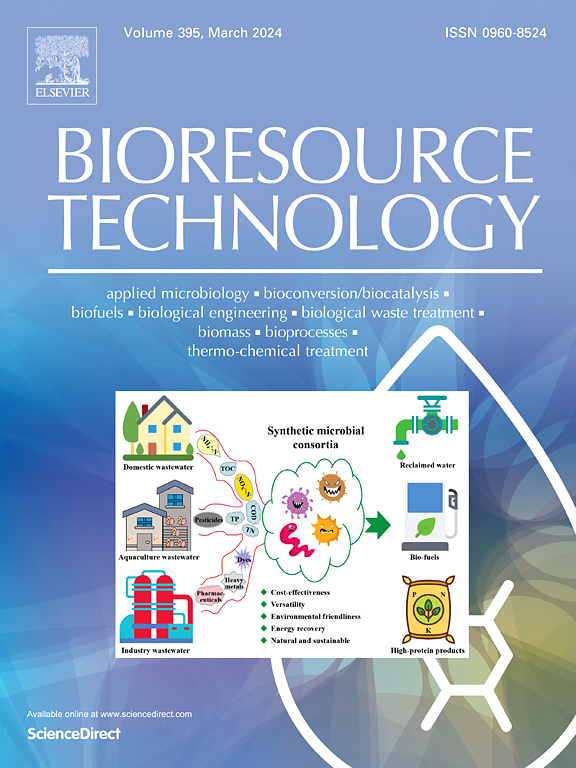磁黄铁矿促进染料废水中好氧颗粒污泥的形成:pH值,界面自由能和微生物群落进化。
IF 9.7
1区 环境科学与生态学
Q1 AGRICULTURAL ENGINEERING
引用次数: 0
摘要
介绍了利用天然磁黄铁矿粉作为成核剂在4个序批式反应器(sbr)中处理染料废水的技术。通过对pH、磁黄铁矿表面自由能、污泥zeta电位、微生物群落变化等因素的分析,阐明磁黄铁矿促进好氧颗粒污泥(AGS)形成的机理。在中性条件下连续运行140 天以上,天然磁黄铁矿在中性条件下快速培养AGS。污泥结构紧凑,沉降性能令人满意(SVI30/SVI5接近1)。污泥zeta电位和磁黄铁矿界面自由能的降低与AGS疏水性的增加相关,导致污泥聚集性增强。发现pH、污泥界面自由能和zeta电位的变化会影响污泥内微生物群落组成和多样性。本研究为染料废水的处理提供了一条新的途径。本文章由计算机程序翻译,如有差异,请以英文原文为准。

Pyrrhotite promote aerobic granular sludge formation in dye wastewater: pH, interfacial free energy, and microbial community evolution
This study introduces a technique utilizing natural pyrrhotite powder as a nucleating agent in four sequencing batch reactors (SBRs) for the treatment of dye wastewater. Through analysis of various factors including pH, pyrrhotite surface free energy, sludge zeta potential, and shifts in microbial communities, the mechanism by which pyrrhotite facilitates the formation of aerobic granular sludge (AGS) is elucidated. Over 140 days of continuous operation under neutral conditions, natural pyrrhotite rapidly cultivated AGS under neutral conditions. The structure of the sludge was compact and the settling properties were satisfactory (SVI30/SVI5 close to 1). Reductions in both sludge zeta potential and interfacial free energy of pyrrhotite correlated with increased hydrophobicity of AGS, leading to enhanced sludge aggregation. Changes in pH, sludge interfacial free energy, and zeta potential were found to influence the microbial community composition and diversity within the sludge.This study provides a novel approach for dye wastewater treatment.
求助全文
通过发布文献求助,成功后即可免费获取论文全文。
去求助
来源期刊

Bioresource Technology
工程技术-能源与燃料
CiteScore
20.80
自引率
19.30%
发文量
2013
审稿时长
12 days
期刊介绍:
Bioresource Technology publishes original articles, review articles, case studies, and short communications covering the fundamentals, applications, and management of bioresource technology. The journal seeks to advance and disseminate knowledge across various areas related to biomass, biological waste treatment, bioenergy, biotransformations, bioresource systems analysis, and associated conversion or production technologies.
Topics include:
• Biofuels: liquid and gaseous biofuels production, modeling and economics
• Bioprocesses and bioproducts: biocatalysis and fermentations
• Biomass and feedstocks utilization: bioconversion of agro-industrial residues
• Environmental protection: biological waste treatment
• Thermochemical conversion of biomass: combustion, pyrolysis, gasification, catalysis.
 求助内容:
求助内容: 应助结果提醒方式:
应助结果提醒方式:


